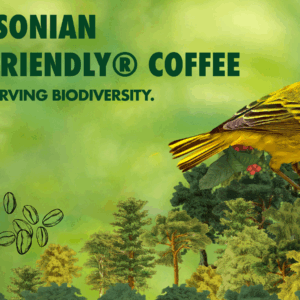7 Ways to Enjoy an Environmentally Friendly Fall
As the weather cools and the seasons change, it is time to think about how you can make better choices for the environment this fall!
1. Shop for local foods
My favorite part of autumn is absolutely the harvest. From pumpkins, to onions, to potatoes, most of us here in Canada have a variety of delicious vegetables come into season during the fall.
A tip to acquire the most delicious and fresh vegetables around is to buy locally-grown produce. Not only does it help support the local economy, but it reduces the environmental impact associated with long-distance food transportation. Head to your local farmer’s market, and the next time you’re out in the country, keep your eye out for food stands where farmers often sell their freshly-picked produce.
Another fun way to enjoy local produce is to pick it yourself! Grab some friends, family or your significant other and make a date of picking at a local apple orchard.
2. Indulge in sustainable fall fashion
When the cold weather rolls around, some of us long to revamp our style and revel in the cozy big sweaters and earthy palette that fall fashion brings. Thankfully, there are several ways the environmentally-conscious fashionista can indulge during the fall.
To reduce waste, avoid fast fashion, and even save a few bucks, visit thrift stores in your area. You may have to dig around a bit, but with some patience you’re sure to find some gems hidden within the racks.
If you have no luck at the thrift stores, seek out local and environmentally-conscious companies to shop from. My personal favorite eco-friendly Canadian brand is Matt & Nat, a Montréal-based company which uses recycled water bottles to make a wide variety of sophisticated purses, briefcases, backpacks, wallets and shoes.
3. Start next year’s vegetable garden early
Growing your own food is a fun and rewarding way to reduce the environmental impacts associated with large-scale food production. Whether you already have a vegetable garden or not, you can start parts of next year’s garden this fall!
Like tulips, certain vegetables are best planted before the winter. Depending on where you live, this usually includes garlic, onions, and shallots. 6-8 weeks before the expected last frost, start a new garden plot or prep your existing one. Remove any remaining plant material (excluding perennials), lightly fertilize and work your soil, plant your garlic, onion and shallots accordingly, and cover lightly or heavily with mulch (depending on how cold your winters are). Planting these foods in the fall will produce a bigger crop with fuller flavour, ready to be enjoyed late summer the following year.
4. Have a plant-based Thanksgiving
Animal agriculture is one of the top sources of greenhouse gas emissions, and consumes extremely large volumes of water. One fun and festive way to reduce your environmental impact this fall is by hosting an entirely plant-based Thanksgiving!
As recognition of the environmental, health and animal welfare benefits of a plant-based diet grows, it’s easier than ever to find tasty alternatives to traditional meat and dairy-based recipes. There are several dishes you can make that will keep your Thanksgiving traditions alive, while keeping your environmental impact low; for example, stuff a butternut squash with your go-to stuffing recipe, and replace butter in your apple pie recipe with margarine.
Find yourself short of ideas? Check out some plant-based cookbooks or online food blogs (my favorites are here and here).
Recipes for plant-based versions of classic fall favourites are widely available online. Left: 3-bean chilli served in roasted pumpkin bowls. Right: dairy-free pumpkin spice “cheesecake”.
5. Help out the feathered fall migrants and winter residents
Fall and winter are challenging seasons for our feathered friends. Many bird species make the long, difficult journey south during the fall, while others stay and endure Canada’s sub-zero winter temperatures.
Food scarcity is often a major challenge for both parties. The best thing you can do to help is avoid pruning your fruiting, flower and seed-bearing plants until the early spring. These plants provide an excellent food source for migrants to refuel on their way south, and help sustain the species who stick around for the winter.
Fall is also great time to clean any bird feeders, bird baths and birdhouses you may have; this can help prevent the spread of disease. Birds benefit year-round from fruiting trees. Avoid trimming these plants in your yard until the spring to help keep more food sources available for birds.
6. Go green for Halloween
Whether you’ll be going door-to-door, giving out candy, or heading to a costume party, you can be festive this Halloween while staying environmentally-conscious.
Dressing up? Dig out an old costume you wore years ago, swap with a friend, or head to a thrift store. Alternatively, if you’re the creative type, make a DIY masterpiece using things you already have around the house.
Decorating? Pinterest is your best friend. You can find countless DIY Halloween decoration ideas that don’t require you to buy anything new, or that are free of plastic and other environmentally-harmful products.
Giving out candy? Source out ones that uses the least amount of packaging (while remaining safe for kids, of course).
7. Try keeping a cooler house
This is an easy tip to reduce your impact, but it may take a little adjustment time. If you own a home or rent a place where you can control the thermostat, try keeping the temperature a bit cooler than you normally do during the fall and winter months. Break out your cozy sweaters, bundle up in some blankets, and enjoy hot cups of tea. After a few days, you’ll adjust to having your place a few degrees cooler. Plus, you’ll save a few bucks on your energy bill!
What are some things you do to enjoy an environmentally-friendly fall? Leave a comment below!



